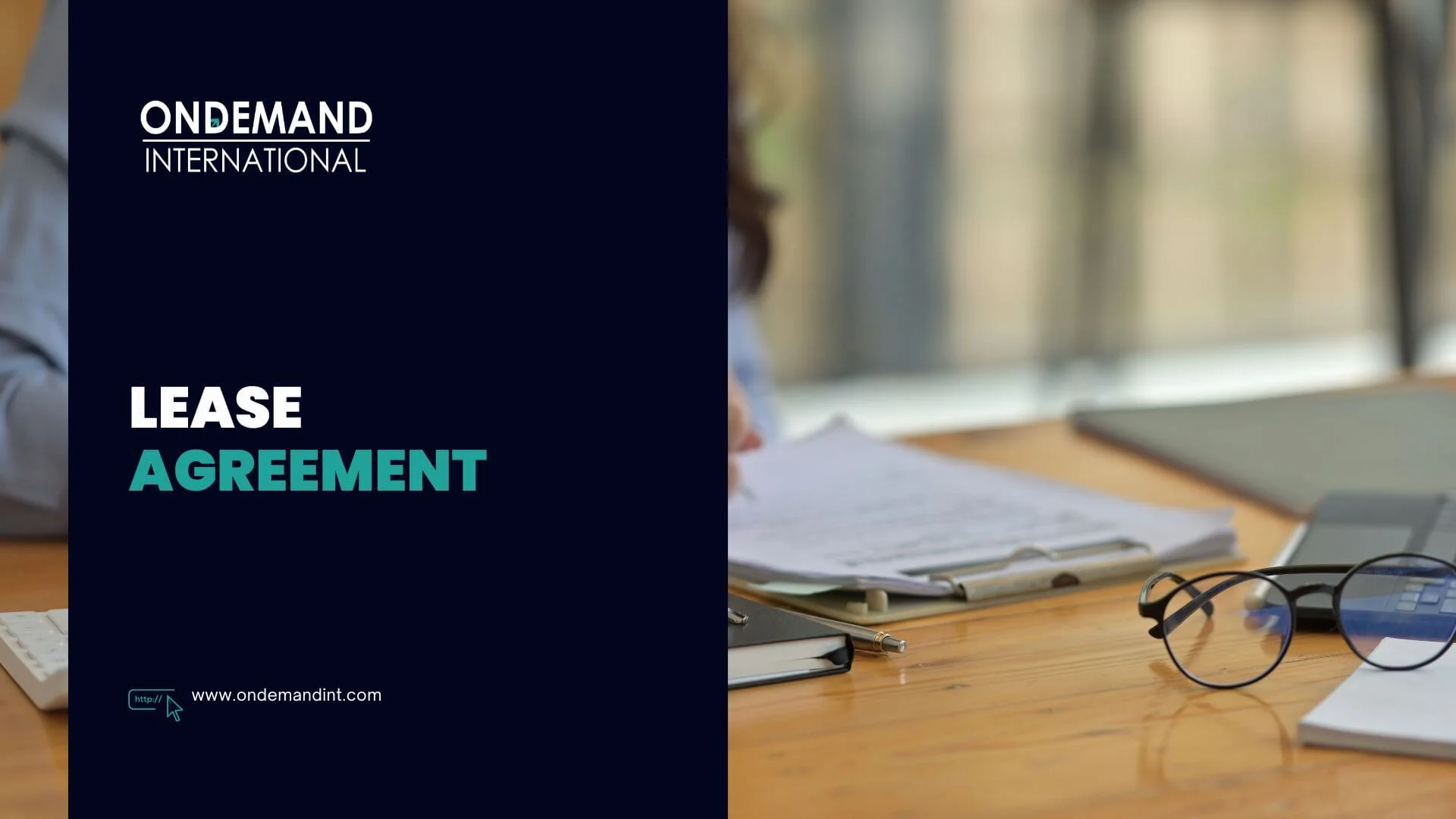
Lease Agreement
Navigating the realm of property rentals and real estate can often seem like traversing a labyrinth of legal jargon and complex procedures. At the heart of this maze lies the lease agreement, a pivotal document that governs the relationship between landlords and tenants. This contract not only outlines the responsibilities and rights of each party but also serves as a legal safeguard in the dynamic world of property leasing. In a lease, it is essential that both parties comprehend the terms. Rent, the duration of the lease, and any updated rules pertaining to residential or commercial sites are among the terms and conditions that tenants need to be informed of. It’s important for landlords to safeguard their investments and set clear expectations.
This comprehensive guide aims to demystify lease agreements, breaking down their types, key components, and the nuances of negotiation. Whether you’re a first-time renter, a seasoned property owner, or somewhere in between, this article will equip you with the knowledge and confidence to handle lease agreements effectively and efficiently.
What is a Lease Agreement?
Lease agreements, essentially contracts between landlords and tenants, set the terms and conditions for renting property. Lease agreements cover longer terms, usually a year or more, in contrast to rental agreements, which are usually short-term and renewable on a monthly basis. Since their creation centuries ago, leases have changed to reflect shifts in both property law and the dynamics between tenants and landlords. As a result, they are now indispensable in the current real estate market.
Types of Lease Agreements
Depending on the type of property and the conditions that the landlord and tenant agree upon, lease agreements differ greatly. To make sure their wants and expectations are satisfied, it is essential for both parties to be aware of these variances.
Residential Lease Agreements
These are the most common type of lease agreements, used for renting out apartments, houses, and other residential properties. They often include details on the duration of the lease, the monthly rent, the security deposit, the pet policies, and the maintenance responsibilities. Residential tenancy rules are specific to each location and must be followed by these agreements.
Commercial Lease Agreements
Used for commercial real estate, such as offices, retail establishments, and warehouses. These contracts are more intricate than residential leases since they frequently contain clauses pertaining to repairs, signs, and business use. They might also contain provisions regarding how modifications to the business will affect the terms of the lease and how the landlord and business tenant would split up maintenance duties.
Fixed-Term Lease
There are start and end dates associated with a fixed-term lease. While it can be less flexible than month-to-month leases, this kind of agreement gives stability to both the landlord and the renter.
Month-to-Month Lease
These leases are more adaptable, enabling any party to end the contract with the required amount of notice—usually thirty days. This kind is well-liked by landlords who desire more control over their property or by tenants who require temporary housing.
Sublease Agreement
This type of agreement occurs when the original tenant leases the property to another tenant. It’s important that subleasing be permitted by the initial lease agreement, and authorization from the landlord is often needed.
It is crucial to select the lease agreement that best fits your particular circumstances because different types of lease agreements address different demands and situations.
Key Components of a Lease Agreement
The rights and responsibilities of the landlord and the tenant should be spelled out in detail in a well-written lease agreement.
The following are the essential elements that must be present:
- Names of the Parties and the Property: Clearly state the names of the landlord as well as the tenant, along with the address and a thorough explanation of the property being leased.
- Duration of Lease: This outlines the length of the lease. It should clearly mention the start and end dates for fixed-term leases or the conditions for renewal or termination in month-to-month leases.
- Rent Details: The rent amount, due dates, and approved payment options are all included in this section. It should also specify late fees and any conditions for rent adjustments.
- Security Deposit: Indicate the amount of the security deposit, the terms under which it must be returned, and any potential deductions for damages or missed rent.
- Maintenance and Repairs: Define who is accountable for maintenance and repairs. Typically, landlords handle major repairs, while tenants are responsible for daily upkeep.
- Rules and Regulations: Include any specific rules pertaining to the property, like noise restrictions, pet policies, and guest policies. This section is essential for maintaining order and making sure the land is properly maintained.
- Legal Clauses: These may include subletting rules, termination conditions, dispute resolution methods, and any other legal stipulations relevant to the lease.
- Signatures: For the lease contract to be enforceable, it needs to be signed by both the landlord and the tenant. Moreover, witness signatures can be necessary, based on local regulations.
Negotiating Your Lease Agreement
Although it can be intimidating to negotiate a lease, you can win the negotiation if you know what to look for. While landlords should concentrate on security deposit requirements and maintenance clauses, tenants should bargain over parameters including rent amount, lease period, and renewal possibilities. It’s important to steer clear of typical errors like failing to read rent escalation provisions and not viewing the property before signing.
Legal Considerations in a Lease Agreement
Legal compliance is non-negotiable in lease agreements. This entails following all applicable local and state housing rules and making sure the terms are reasonable and nondiscriminatory. Tenants should be informed of their rights and obligations under the lease, and landlords should be knowledgeable of the laws governing rent control, eviction procedures, and tenant rights.
Terminating a Lease Agreement
Terminating a lease agreement can either be straightforward or complex, depending on the terms set out in the agreement and the circumstances of the termination. The terms of the notice period, any early termination penalties, and the lease renewal procedure should be understood by all parties. It’s important to comprehend the lease’s dispute resolution procedures since disagreements can occur.
Conclusion
In the world of real estate, lease agreements are the cornerstone of an important relationship and more than just a piece of paper. They guarantee both landlords and tenants clarity, justice, and legal protection. As we’ve seen, these contracts can take many different forms, and each has its own set of guidelines designed to suit particular rental situations. It is essential that you fully understand every clause in your rental agreement. Whether you’re managing a portfolio of properties or signing your first lease, knowing the basics of lease agreements is essential to making confident, well-informed decisions in the real estate market. It’s usually better to be safe than to deal with unanticipated problems later on, so don’t be afraid to get expert legal counsel when in doubt.
FAQ’s
Depending on the conditions of the lease, penalties may include forfeiting the security deposit or having to pay rent until a new renter is found.
In general, it is not possible for a landlord to raise rent during a lease. Typically, rent increases are governed by local legislation and the conditions of the contract.
Written agreements are advised for clarity and legal enforceability, even though verbal agreements may be legally enforceable.
The conditions of the lease will determine this. Certain contracts specifically prohibit subletting.
As per the conditions of the lease, landlords are allowed to inspect the property, but they must give tenants reasonable warning and respect their privacy.

